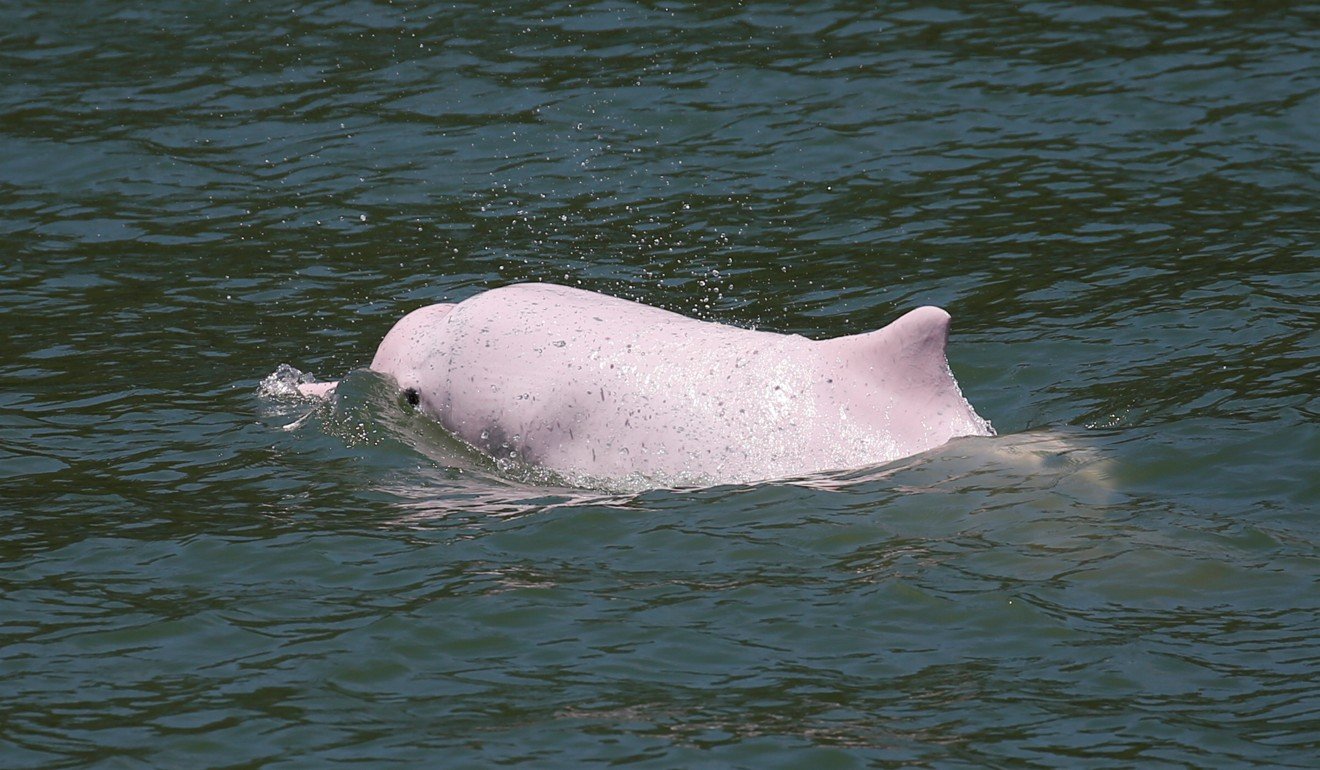
Officials in Hong Kong and mainland China disagree over fate of white dolphins in Pearl River
- Chinese Ministry of Agriculture says population of mammal ‘basically stable’ after building of Hong Kong-Zhuhai-Macau Bridge
- But Hong Kong counterparts find that numbers in waters off Lantau Island have almost halved since 2011
The population of Chinese white dolphins in the Pearl River estuary is “basically stable” despite nearly a decade of disruptive marine construction works on the world’s longest sea crossing and a near 20 per cent drop since 2005, according to the bridge’s management authority.
Research commissioned by the Hong Kong-Zhuhai-Macau Bridge Authority – a project-managing body jointly established by the three governments – indicated that dolphin numbers in the Lingding Channel have remained roughly the same since work began in 2009.
The survey results – conducted in waters of the central channel of the Pearl River Delta running from the mouth at Humen all the way down to Dongao island – were mentioned in a post on its website on Sunday.

Construction of the multibillion-dollar, 55km bridge began in 2009 and it finally opened on October 23 after years of cost overruns and delays.
From 955 individual dolphins identified in abundance surveys between August 2010 and January 2011, and 957 between 2015 and 2016, the number stood at 945 between 2017 and 2018. In 2005-06, before any of the work began, the figure stood at about 1,167.
The frequency of dolphin sightings in the Pearl River Estuary Chinese White Dolphin Nature Reserve also rose from 258 groups in 2016, to 380 in 2017, the authority said.
“Therefore, since the construction of the main bridge, the distribution of the Chinese white dolphins in the Lingdingyang has basically remained stable and within the study’s margin of error,” the authority said, citing the findings by the South China Sea Fisheries Research Institute.
Hong Kong’s Chinese white dolphin numbers remains critically low
“Comparison of data before and after construction work indicate no serious impact on the Chinese white dolphins due to the construction of the [bridge].”
The institute is an arm of the Chinese Academy of Fishery Sciences, an institution of the China’s Ministry of Agriculture. The full report has not been made public.
The authority, quoting institute researcher Chen Tao, said conclusions about the mammals’ overall survivability should not be based on observational data sampled from small marine areas – a presumed reference to Hong Kong waters.
The authority’s figures stand in contrast to the annual studies commissioned separately by Hong Kong’s Agricultural, Fisheries and Conservation Department on Chinese white dolphin around Lantau Island, their main habitat. The survey methodologies used in both studies are the same.

According to the department, a historic low of 47 dolphins were spotted around the island from April 2017 to March 2018, down from 87 in 2010-11. They have largely disappeared from northeast Lantau since 2012, when work on the Hong Kong section of the bridge started.
Even with most of the bridge work completed last year, there were “no signs of recovery at all”, said Dr Samuel Hung Ka-yiu of the Cetacean Research Project, which conducted the study.
Other cumulative pressures on their habitat include ongoing work on a third runway at Hong Kong International Airport, and other planned reclamation projects such as the Tung Chung new Town extension.
Taison Chang Ka-tai, chairman of the Hong Kong Dolphin Conservation Society, said from both the authority and the department’s data, it was undeniable that the overall population has been in decline since construction started.
“They can’t preclude that there had been no impact on dolphin populations from the bridge works,” he said.
“It may not have only be because of it, as the marine environment of the entire Pearl River estuary is getting worse, but was definitely a contributing factor.”

